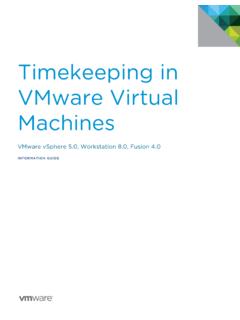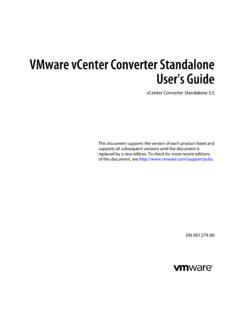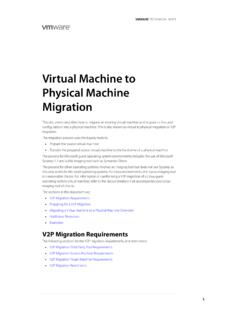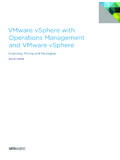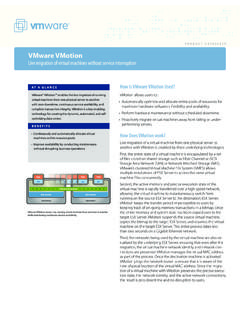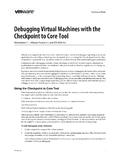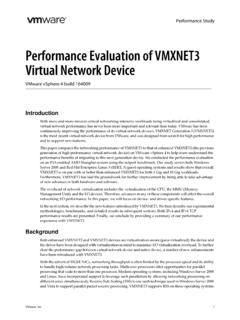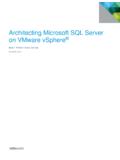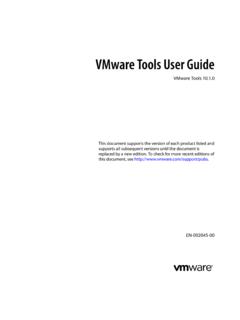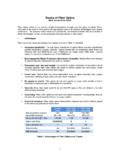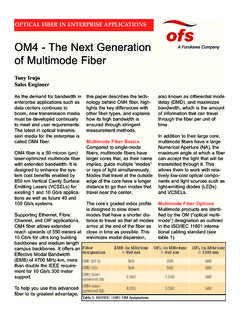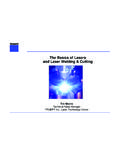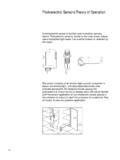Transcription of SAN Conceptual and Design Basics
1 TECHNICAL NOTE1 VMware Infrastructure 3 SAN Conceptual and Design BasicsVMware ESX Server can be used in conjunction with a SAN (storage area network), a specialized high speed network that connects computer systems to high performance storage subsystems. Using ESX Server together with a SAN provides extra storage for consolidation, improves reliability, and helps with disaster recovery. To use ESX Server effectively with a SAN, you re expected to be familiar with the SAN technology. This white paper offers a brief introduction to some basic SAN concepts, but doesn t aim to be an exhaustive source of information on SANs. If you are an ESX Server administrator planning to set up ESX Server hosts to work with SANs, you should also consult other resources available in print and on the Internet to achieve a working knowledge of SAN concepts.
2 Additional information on how ESX Server interacts with SAN may be found in SAN Configuration white paper discusses these topics: ! SAN Basics on page 1! SAN Components on page 4! Understanding SAN Interactions on page 7! SAN Installation Considerations on page 10! SAN Design Basics on page 11 SAN BasicsA SAN is a specialized high speed network of storage devices and switches connected to computer systems. This white paper refers to the computer systems as servers or hosts. A SAN presents shared pools of storage devices to multiple servers. Each server can access the storage as if it were directly attached to that server. A SAN supports centralized storage management.
3 SANs make it possible to move data between various storage devices, share data between multiple servers, and back up and restore data rapidly and efficiently. In addition, a properly configured SAN facilitates both disaster recovery and high Conceptual and Design Basics2 VMware, physical components of a SAN can be grouped in a single rack or data center or connected over long distances. This makes a SAN a feasible solution for businesses of any size: the SAN can grow easily with the business it Component OverviewThis section gives an overview of SAN components. The numbers in the text correspond to numbers in Figure 1, SAN Components, on page its simplest form, a SAN consists of one or more servers (1) attached to a storage array (2) using one or more SAN switches.
4 Each server might host numerous applications that require dedicated storage for applications processing. The following components, discussed in more detail in SAN Components on page 4 are involved:!SAN Switches (3) SAN switches connect various elements of the SAN. In particular, they might connect hosts to storage arrays. SAN switches also allow administrators to set up path redundancy in the event of a path failure from host server to switch or from storage array to switch. !Fabric (4) The SAN fabric is the actual network portion of the SAN. When one or more SAN switches are connected, a fabric is created. The FC protocol is used to communicate over the entire network.
5 A SAN can consist of multiple interconnected fabrics. Even a simple SAN often consists of two fabrics for Conceptual and Design Basics3 VMware, Inc.!Connections: Host Bus Adapters (5) and Storage Processors (6) Host servers and storage systems are connected to the SAN fabric through ports in the fabric. !A host connects to a fabric port through an HBA.!Storage devices connect to fabric ports through their storage 1. SAN ComponentsHow a SAN WorksThe SAN components interact as follows:1 When a host wants to access a storage device on the SAN, it sends out a block based access request for the storage device. 2 SCSI commands are encapsulated into FC packets. The request is accepted by the HBA for that host and is converted from its binary data form to the optical form required for transmission on the fiber optic cable.
6 3At the same time, the request is packaged according to the rules of the FC protocol. 4 The HBA transmits the request to the SAN. 5 Depending on which port is used by the HBA to connect to the fabric, one of the SAN switches receives the request and sends it to the storage processor, which sends it on to the storage device. The remaining sections of this white paper provide additional information about the components of the SAN and how they interoperate. These sections also present general information on configuration options and Design arraySAN switchSAN switchfabric AHBA 2 HBA 1fabric BSPSP15332644 SAN Conceptual and Design Basics4 VMware, ComponentsThe components of an FC SAN can be grouped as follows and are discussed below:!
7 Host Components on page 4! Fabric Components on page 5! Storage Components on page 5 Figure 2 shows the SAN component layers. Figure 2. SAN Component LayersHost ComponentsThe host components of a SAN consist of the servers themselves and the components that enable the servers to be physically connected to the SAN.!HBAs are located in the servers, along with a component that performs digital to optical signal conversion. Each host connects to the fabric ports through its HBAs.!HBA drivers running on the servers enable the servers operating systems to communicate with the arrayhostcomponentsfabriccomponentsstora gecomponentsSPSP storage arraySPSPSAN switch ASAN switch BHBAHBAHBAHBA fabric Bfabric ASAN Conceptual and Design Basics5 VMware, ComponentsAll hosts connect to the storage devices on the SAN through the SAN fabric.
8 The network portion of the SAN consists of the following fabric components:!SAN Switches SAN switches can connect to servers, storage devices, and other switches, and thus provide the connection points for the SAN fabric. The type of SAN switch, its Design features, and its port capacity all contribute to its overall capacity, performance, and fault tolerance. The number of switches, types of switches, and manner in which the switches are interconnected define the fabric topology. !For smaller SANs, the standard SAN switches (called modular switches) can typically support 16 or 24 ports (though some 32 port modular switches are becoming available). Sometimes modular switches are interconnected to create a fault tolerant fabric.
9 !For larger SAN fabrics, director class switches provide a larger port capacity (64 to 128 ports per switch) and built in fault tolerance.!Data Routers Data routers are intelligent bridges between SCSI devices and FC devices in the SAN. Servers in the SAN can access SCSI disk or tape devices in the SAN through the data routers in the fabric layer.!Cables SAN cables are usually special fiber optic cables that are used to connect all of the fabric components. The type of SAN cable and the fiber optic signal determine the maximum distances between SAN components and contribute to the total bandwidth rating of the SAN. !Communications Protocol Fabric components communicate using the FC communications protocol.
10 FC is the storage interface protocol used for most of today s SANs. FC was developed as a protocol for transferring data between two ports on a serial I/O bus cable at high speeds. FC supports point to point, arbitrated loop, and switched fabric topologies. Switched fabric topology is the basis for most current ComponentsThe storage components of a SAN are the storage arrays. Storage arrays include storage processors (SPs). The SPs are the front end of the storage array. SPs communicate with the disk array (which includes all the disks in the storage array) and provide the RAID/LUN functionality. Storage ProcessorsSPs provide front side host attachments to the storage devices from the servers, either directly or through a switch.
